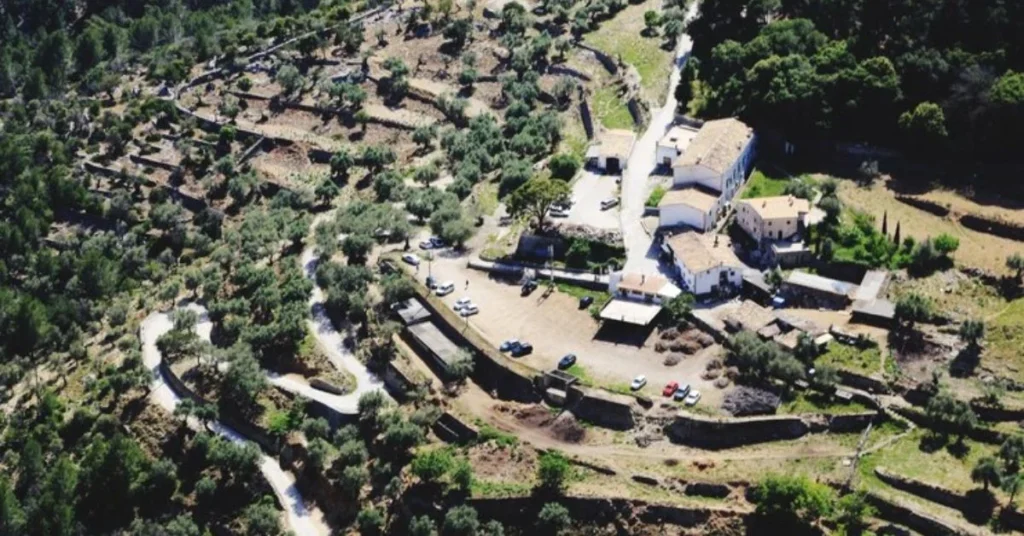In the coastal community of Montecito, California—an enclave known for its affluence, tranquil vistas, and storied estates—a dispute over an easement involving the Montecito Country Club has emerged as more than a localized property disagreement. It has become a focal point for broader questions about land use rights, community identity, development versus preservation, and the complexities of California property law.
This article unpacks the Montecito Country Club easement dispute in its full context, explaining how it originated, what it means legally and socially, and why it captures so many critical issues converging at once.
Setting the Scene: Montecito and Its Cultural Landscape
Montecito, nestled against the Santa Ynez Mountains and facing the Pacific Ocean, is home to a blend of historic estates, celebrity homes, and lush golf courses. The Montecito Country Club, perched with panoramic views, is both a social hub and a symbol of exclusivity. Its history stretches back to the early 1900s, tying it closely with the development of the broader Santa Barbara region.
But Montecito is not immune to tension. Its wealth and exclusivity often come into conflict with public interests, neighborhood values, and longstanding property arrangements. The current easement dispute reflects precisely this collision.
What is an Easement?
Before diving into the specifics, it’s important to clarify what an easement is in legal terms. An easement is a legal right to use another person’s land for a specific purpose. Common examples include driveways that cross a neighbor’s property, utility lines, or access to public paths.
Easements can be created through formal agreement, implication, or longstanding use (known as “prescriptive easement”). In the context of Montecito, easements have historically been tools to balance private land ownership with communal access and utility rights.
The Origin of the Dispute
The roots of the Montecito Country Club easement dispute lie in overlapping layers of property development, historical access routes, and a recent wave of renovations initiated by the club’s current owners. As the club underwent a multimillion-dollar redevelopment project, which included reconfiguring the golf course, upgrading facilities, and redesigning the landscape, several longstanding easements became contested.
Key Flashpoints:
- Historical Access Path: Residents adjacent to the club claim that for decades, a trail crossing part of the club’s land was used by the public or neighbors, forming what they argue is a prescriptive easement.
- Utility Corridor Conflict: A secondary easement was granted decades ago for underground utilities. During renovations, the club reportedly relocated or restricted access to this area, prompting legal and infrastructural concerns.
- View Corridors and Air Rights: Some homeowners argue that modifications to the golf course and new structures block previously unobstructed views, implicating easement-like rights tied to airspace or restrictive covenants.
The Legal Contours
California property law governs easements through a mix of statutory guidelines and common law principles. In cases like this, courts typically examine the original intent of the easement, the nature and frequency of its historical use, and any changes in circumstance that may affect its relevance or enforceability.
Key Legal Issues:
- Prescriptive Easement: Have the trails or access routes been used openly, continuously, and without explicit permission for at least five years?
- Modification or Termination: Can the country club, as the servient estate (land burdened by the easement), legally relocate or modify the easement without the dominant estate’s (beneficiaries’) consent?
- Damage and Remedy: If the club obstructed or violated the easement, what remedies are available? Monetary damages? Restitution of access?
Stakeholders and Perspectives
Montecito Country Club Management
The club contends that the upgrades are essential for its long-term viability and appeal. Representatives argue that any easements were either formally extinguished or have been misinterpreted by residents. From their perspective, maintaining private land rights is crucial.
Nearby Residents and HOA Groups
Homeowners bordering the club often purchased their properties with certain assumptions about access, views, or rights of use. For them, the dispute is not merely legal but deeply personal and existential—about the character of their neighborhood.
Local Government
The Santa Barbara County planning commission and legal offices have had to walk a delicate line. While promoting local economic vitality through investment, they must also uphold land use codes, environmental laws, and community values.
Environmental and Heritage Advocates
Given Montecito’s fragile ecosystem and rich cultural history, advocates have raised concerns about the ecological impact of the renovations and potential disregard for historic access routes that served as informal public trails.
Broader Implications
Precedent for Future Development
Legal outcomes in the Montecito easement dispute may influence how future property development balances private initiative with communal rights. A decision favoring the club could set a precedent that weakens prescriptive easements; a ruling favoring residents could limit future development flexibility.
Class and Access Dynamics
The dispute reflects deeper tensions in affluent enclaves where exclusivity collides with evolving public expectations about access and inclusion. Who gets to walk where, and why, becomes a mirror for larger debates about privilege and equity.
Legal Education and Property Norms
This dispute is already studied in California law schools as a complex case of easement conflict. It illustrates how historic, social, and environmental considerations interact with property law in nuanced ways.

Mediation, Litigation, or Legislation?
As of 2025, the case remains unresolved. A combination of mediation efforts and court filings have occurred, with mounting legal fees on both sides. Some experts have called for legislative clarification on easement modification rights in historic districts like Montecito.
Mediation Advantages:
- Confidential
- Quicker resolution
- Preserves neighborhood relationships
Litigation Outcomes: Montecito Country Club
- Sets legal precedent
- Greater transparency
- Risk of protracted process
Legislative Action:
- Creates clarity statewide
- Avoids case-by-case confusion
- Requires political consensus, which is rare on property rights
Voices from the Community
Local forums and town halls have revealed a broad spectrum of opinions. Some longtime residents express frustration over what they see as aggressive development and erosion of communal norms. Others defend the club’s right to modernize and maintain privacy. Several are caught in between, simply hoping for a resolution that doesn’t further divide their community.
“I walked that path with my children for years. Suddenly it’s fenced off? It feels like part of Montecito is disappearing,” said a resident of Middle Road.
“We love the club, but we also love our neighborhood. It shouldn’t be either-or,” commented a member of both the club and the HOA.
Potential Resolutions and Lessons Learned
Regardless of the outcome, several key lessons are emerging from the Montecito Country Club easement dispute:
- Document Everything: Homeowners and landowners alike must ensure all agreements, rights, and understandings are legally documented.
- Community Planning Matters: Urban planning must anticipate conflicts between modernization and heritage.
- Transparency Builds Trust: The more open both sides are about their intentions and actions, the more likely it is to reach a peaceful resolution.
- Balance of Rights: True resolution lies in balancing private development rights with community heritage and access.
Conclusion: Montecito Country Club
The Montecito Country Club easement dispute is far more than a tangle of property lines. It is a living example of how law, land, and legacy intersect in one of America’s most iconic communities. As Montecito continues to evolve, this conflict will likely shape future dialogue about what kind of community it wishes to be: one defined by exclusivity and privacy or one where shared access and mutual respect set the tone.
This easement dispute forces residents, developers, and lawmakers alike to confront the challenge of coexistence. In a world where land is increasingly scarce and values increasingly plural, finding common ground—literally and figuratively—has never been more critical.
Only time, law, and perhaps a bit of neighborly diplomacy will determine the final chapter of this very Californian story.
For more information, click here.









